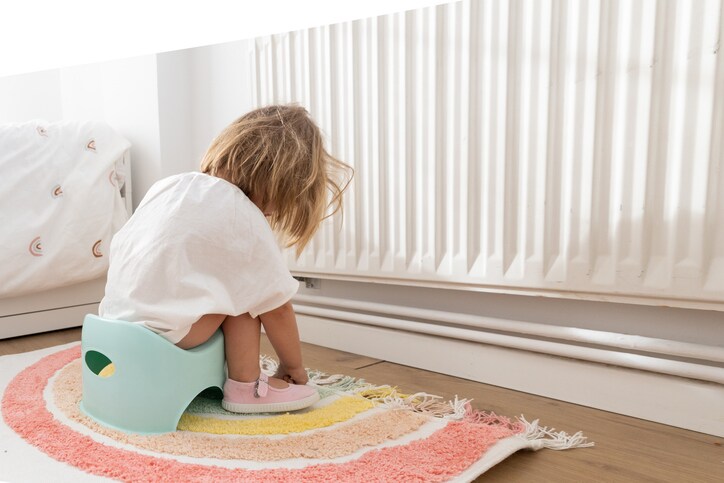The “sandwich generation” is made up of people who are simultaneously taking care of their children and helping their aging parents. Predictably, this causes a lot of stress. At times, it can feel impossible to manage everything. You’re only one person, after all!
“I don’t think I handle the stress of being in the sandwich generation well at all,” says Jennifer James McCollum, a blogger at Generation X, mother of three and caretaker of her 80-year-old mother. “Every night when I go to bed, I worry about my mother and my kids. I worry that I didn’t do enough that day to care for them, to love them, to enjoy them. There are never enough hours.”
McCollum is not alone. The stress of having to expend energy all over the place — for children still in the home, toward an aging or ailing parent, for all other relationships — while also maintaining some semblance of a career or time to oneself can feel Herculean. Thankfully, there are ways to manage this unique stress. Here’s how to help the sandwich generation and their never-ending stressors.
Key takeaways
- “Sandwich generation” folks simultaneously take care of their children and help their aging parents — and their stress, due to their workload, can be high.
- There are a number of ways to mitigate the stress of being part of the sandwich generation, including sharing the load with other family members and asking your employer for a more flexible schedule.
- If you’re not part of the sandwich generation now, but will be in the future, it’s smart to do some planning ahead of time, including considering the financial aspect.
1. Take time to recharge
“Self-care is not only essential for the caregiver — it is essential for the well-being of the entire family,” says Niro Feliciano, a licensed clinical social worker, psychotherapist and anxiety specialist who works with a number of sandwich generation caregivers. “You can’t pour from an empty cup.”
“Self-care is not only essential for the caregiver — it is essential for the well-being of the entire family.”
— Niro Feliciano, a licensed clinical social worker, psychotherapist and anxiety specialist
But it feels like the more we hear the term, the less we understand exactly what it means. Kristen Roden, 34, is a caregiver based in the Twin Cities who has cared for her husband Adam since he was diagnosed with amyotrophic lateral sclerosis (ALS) in 2015. The Rodens are also raising two young children, 8-year-old Eli and 4-year-old Wesley.
“I think sometimes caregivers are so turned off by the word ‘self-care’ because it sounds like one more thing to add to the to-do list, or they scoff because they think it means get a 90-minute massage and enjoy a glass of wine,” says Roden. “But it’s not that. It’s being intentional in what matters to you and carving out time for those things without feeling guilty.”
For Roden, this means working out at home versus a gym to save commuting time. She also exercises in small bursts.
“Sometimes it’s only 20 minutes,” Roden says. “Or I play tag with my kids after dinner around the house just to get moving.”
If possible, call on a spouse or partner for backup, too, says Feliciano. She suggests, “Try saying: ‘This has been a stressful week, and I don’t see it letting up anytime soon. I think it would really help if I had just an hour to work out or 30 minutes to sit and read a book. Do you think you could manage the kids so I can have that time?’”
A half hour might not seem like much, but it can be a lifeline.
“Self-care is taking deliberate and intentional actions to restore your own energy and strength,” Roden says.
2. Save time while updating family
Many caregivers feel like they spend half their time updating far-flung family members on the condition of their loved one. Having one central place where information is kept and shared with all involved in caregiving is key to simplifying and streamlining.
“A group text chain, while it may seem impersonal, can allow family members to quickly relay information and alleviate lengthy conversations,” says Shelby Myers, a special needs advocate with Bayada Home Health Care, an international nonprofit home health care provider. “Sometimes you just can’t talk about the situation one more time, but people will understand.”
This same idea can be accomplished through a group text on WhatsApp, a document or spreadsheet on Google Drive or Lotsa Helping Hands, which everyone has access to and can update.
3. Share the load with your family
“A caregiver needs a safety net and reliable sources they can turn to for comfort and understanding without judgment,” says Jeanette Raymond, a Los Angeles-based psychotherapist. “You need people to do some shopping; others to pick the kids up after school or take them to a basketball practice. You need people to be flexible and fluid to ease your sense of entrapment.”
“A caregiver needs a safety net and reliable sources they can turn to for comfort and understanding without judgment.”
— Jeanette Raymond, Los Angeles-based psychotherapist
If your kids are past the pre-K age, you can get them to pitch in to help with household chores.
“As my children get older, I try very hard to move them to greater independence,” says McCollum.
And as her kids learn to help out more, she says the burden is lifted a little off her and her husband.
Roden echoes the importance of calling for reinforcement.
“Delegating is important, because it takes something off your plate,” she says. “It allows you either room to breathe a little or time to focus on another matter in which you’re truly needed.”
4. Hire help
Assuming it can fit into the budget, hiring help can be a wise way to take care of the parts of life — like cleaning — that end up getting neglected and causing more stress to the caregiver.
“Help does not have to be all or nothing,” says Feliciano. “You can get partial help in specific areas that might have a significant impact. For example, maybe one of the days you have to take a parent to a doctor’s appointment, you can find someone to help with driving. It’s not a full-time responsibility but enough to lighten the load and give time to devote to other things.”
Professional cleaning can sometimes offer the most “bang for buck,” according to Feliciano. Having someone create order in your own house — even if it is every two weeks or once a month — will help you feel more ordered and peaceful, emotionally and mentally, she says.
And if you’re struggling to fit your preferred form of hired help into the budget, Feliciano suggests asking distant family members to contribute financially even if they can’t be there physically.
5. Talk to your employer
Work flexibility is crucial to tackling your sandwich caregiver duties. Allison Olson lives in St. Louis with her husband and young son while helping her Boston-based father care for her ailing mother long-distance.
“Having a supportive employer is huge,” says Olson. “I’m open and honest about when I need to be completely unavailable and focus on my family, even at times that it’s hard to do that.”
Because she was burning through her sick time, Olson also has taken advantage of her FMLA (Family and Medical Leave Act) benefits, which provide certain employees with up to 12 weeks of unpaid, job-protected leave per year. Your ability to take FMLA will depend on your health insurance status, size of your company, as well as the length of time you have worked there and the hours worked per week, but it is a conversation worth exploring with HR.
Another benefit to investigate: Wellthy. Darlene Stokes, an HR director based in Colorado, often points employees to the program, which she describes as “caregiver support and basically provides you with an administrative assistance for coordinating the care for yourself or a loved one going through a serious illness.”
Employees’ most common ask: “They are looking for emergency or backup day care services for their children,” Stokes says. Some companies actually provide these services in their benefit packages, such as through the Care For Business program, and many employees don’t even know.”
6. Let go of the desire to achieve a perfect balance
“While caring for my dad, I learned that I could not do it all,” says Dr. Nicole Rochester, a former caregiver and CEO of Your GPS Doc LLC. “Sandwich generation caregivers must acknowledge that sometimes, you will not have ‘balance.’ There will be weeks when you focus more on your children or spouse. There will be weeks when you focus more on your aging parent. Let priorities guide these decisions. Sometimes it’s all about putting out fires, and that’s OK.”
“Sandwich generation caregivers must acknowledge that sometimes, you will not have ‘balance.'”
— Dr. Nicole Rochester, a former caregiver and CEO of Your GPS Doc, LLC
Raymond says there’s power in allowing certain to-dos to fall off of your list.
“Some people cannot drop any caregiving tasks in their minds,” says Raymond. “It’s easier to bear the stress of exhaustion than fear being imperfect or losing regard of loved ones.”
If this thought process is plaguing you, make a list of core things, and add tasks of lesser importance when you can fit them, Raymond recommends. This will make you feel better than having an impossible list that you have to drop tasks from, she says.
7. Determine your non-negotiable needs
Caregivers have to be mindful of addressing their own human needs to preempt burnout or exhaustion, Feliciano says.
“You matter too,” she says.
Brad Spiegel is a stay-at-home dad of two in Portland, Maine and is also the primary caregiver for his aging mother, who lives about a half hour away. For him, hitting the gym is the one “must” he tries not to compromise on.
“Being a mostly one-income household, we don’t use sitters very often,” Spiegel says. “So when I need/want to do something, I either squeeze it in, bring the kids or am not able to do it.”
Spiegel’s fix: joining a slightly pricier gym that offers childcare as a perk. The times are limited, but Spiegel says he can usually get a workout in that way or wait to head out once his wife comes home from work. Twice a week, that is his time.
8. Lean on support
“A support system is vital to the mental and physical health of the caregiver,” says Feliciano.
While you’ll do well to relax with friends who are a source of encouragement, Feliciano also recommends finding a therapist.
“If the caregiver is constantly talking about their stressors with a friend, it can have a negative impact on the friendship,” she says. “A therapist can provide support and a safe, nonjudgmental space to talk through the challenges, as well as be someone to walk alongside the caregiver on this emotional journey.”
Olson agrees.
“The time since my mother’s diagnosis is the first time in my life I’ve seen a therapist regularly, and it has helped manage the emotions and the stress a lot,” she says.
You might also consider joining a local support group.
“There are wonderful in-person and online support groups for family caregivers,” says Rochester. “Participate in them as much as possible. Nothing makes you feel better than hearing someone else say, ‘I’m going through that, too. This is how I handled it…’”
9. Do some financial planning
If you think you’ll be part of the sandwich generation in the near future, Andrew Gosselin, a certified public accountant and senior editor of Money Inc., recommends sitting down and taking a look at the current state of your finances.
“Start with a comprehensive understanding of your financial position, setting out a clear budget and saving strategy,” he says. “Regularly contribute to a retirement fund, and consider setting up an emergency fund that could cover at least three to six months of living expenses.”
Gosselin also encourages investing in long-term care insurance for aging parents, which will help cover future health care costs. Though it can be an awkward conversation, talking with your parents about their finances will also give an idea of how much they can cover for their care and how much you may be responsible for.
You’ll also do well to set up small, frequent auto transfers into a high-yield savings account, which can be accessed in an emergency, says Gosselin.
If you need extra support with financial planning, non-profit organizations, such as the National Council on Aging or local Area Agency on Aging, can provide valuable information and support, he says.
10. Discuss long-term care options
It’s important to speak with not only your parents but also with siblings and anyone else who may be involved in their health care decisions.
“Initiate open and honest discussions with parents and family members about their expectations, preferences, and potential future care needs,” says Jasmine Reed, a clinical psychologist. “Encourage conversations about long-term care options, financial planning and healthcare wishes. [Having] these conversations early can help everyone involved understand each other’s perspectives and make informed decisions.”
In hindsight, Susan Horton, a licensed marriage and family therapist, says pre-planning where your aging parents will live and what limitations old age and other health issues may bring will make things easier when the time comes. “I never prepared for the physical limits my mom developed very quickly after being diagnosed with a terminal disease,” she says. “For example, I would have had her transition to a one-level home (she lived in a townhouse) with a bathroom next to her bedroom, closer to where I lived, well before she became physically disabled.”
“Realizing that this is only a season and will not last forever can help.”
— Niro Feliciano
11. Consider time management
Understanding not only what type of care your parents may require but how long things will take is key to not feeling overwhelmed with the demands of the sandwich generation. For example, when considering where your parents will live, it’s also important to keep in mind where their primary care doctors are located and who will be responsible for driving them to and from appointments. When Horton temporarily moved her mother into a house next door to her own, she hadn’t considered how far this was from all her mother’s primary care physicians. “Commuting 45 minutes to every appointment just added to the daily stress,” she says.
12. Keep perspective
Remember that this time in your life will not go on forever.
“Often, there will be a loss when this period ends — either a loss of a parent or relative or even these years when you are supposed to be enjoying your kids comes to an end,” says Feliciano. “Realizing that this is only a season and will not last forever can help.”
Feliciano has realized this as she is about to enter the sandwich generation herself.
“Part of me is thinking about how much my parents have done for me and knowing my time is limited to express my love for them and how grateful I am,” she says. “Even helping is an opportunity to be with them that I won’t have forever. I have four kids, as well, and seeing how fast time is going and watching them getting older helps to embrace this season and all that is good amidst the challenges. I know one day I will have endless time to do many of the things I can’t do now, but I also won’t have the joy and warmth of having everyone under one roof. I know I will miss seeing their faces every day and hearing the sounds of their laughter echo through the house.”





